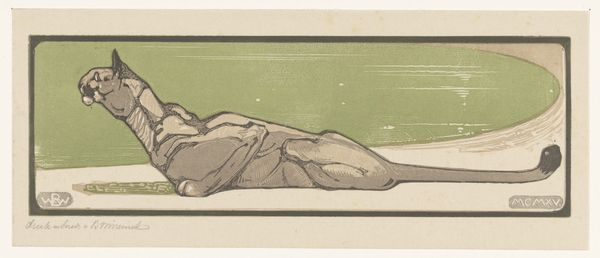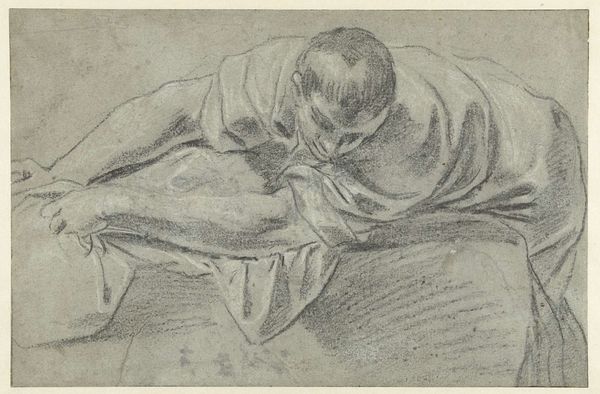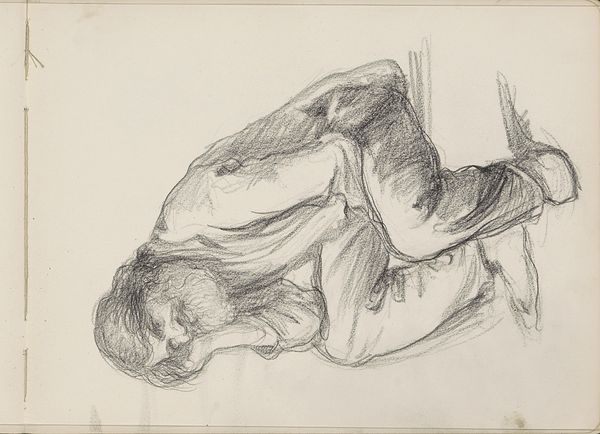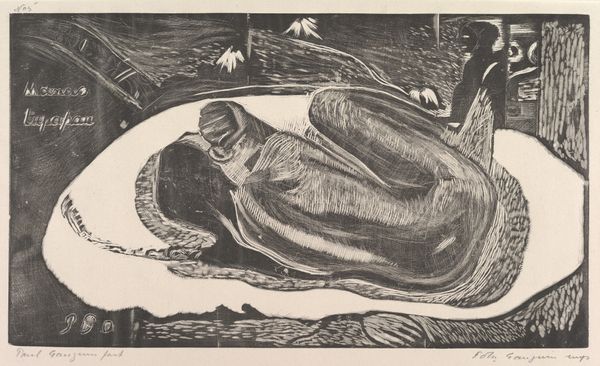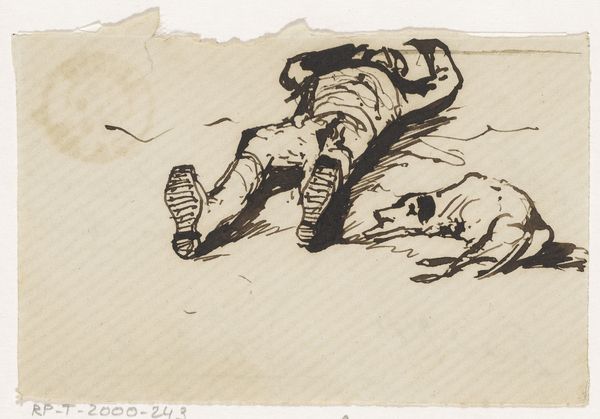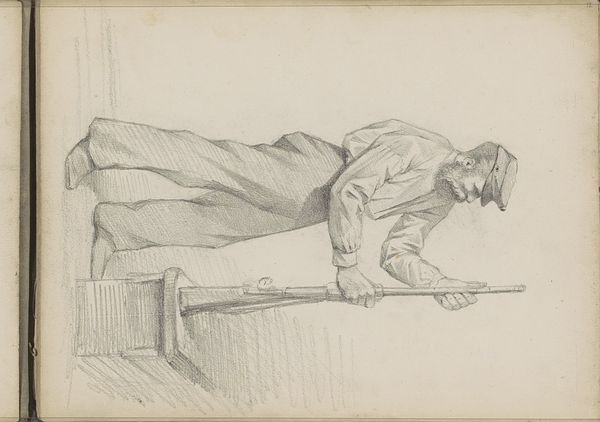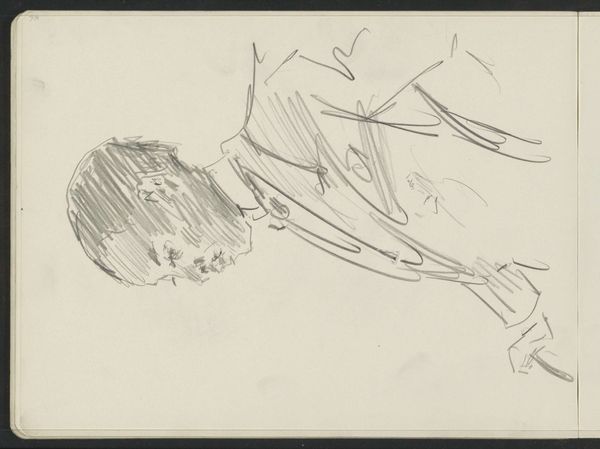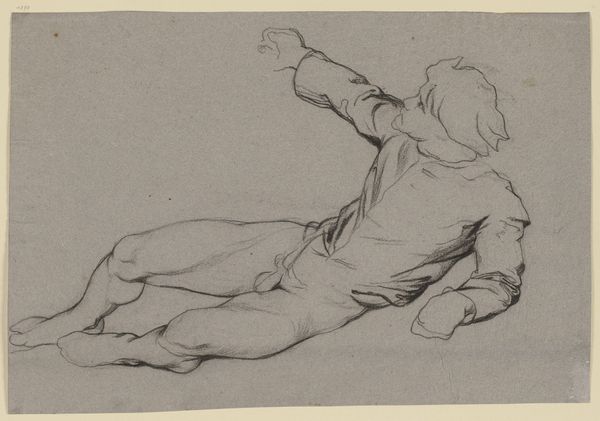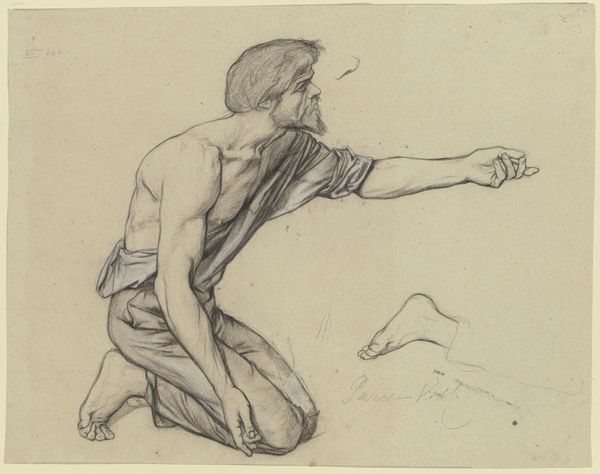
Copyright: Public Domain
Editor: Here we have Wilhelm Steinhausen's "Diether's Lamentation and Penance," created around 1884, using pencil and ink. It strikes me as incredibly desolate. What strikes you about the process, the materials used, and the time it was made? Curator: The interesting point to start with is the availability of paper and ink at the time. Paper wasn’t always an accessible material, especially of this size and presumed quality. It indicates a certain level of privilege, access to a market economy, to depict this narrative of suffering. Does this disparity not pique your curiosity? Editor: It certainly does. So, the act of creation itself, the *how* and with *what*, already layers complexity onto what might seem a simple depiction of grief. I’d naively focused on the “romanticism” aspect of emotional suffering in isolation. Curator: Exactly! Think about the social context: who could afford the *materials* to create, and therefore, whose stories were being told and how those stories perpetuated. Editor: So you’re suggesting the very materials available influenced the narrative that emerged? Like, someone from the peasantry likely wouldn’t have the *means* to depict… peasant struggles. Curator: Precisely. Consumption dictates production. Also, consider what kind of labor made the work possible. Someone had to mine the graphite, process the ink, and fabricate the paper for Steinhausen. Editor: This is so different than the purely aesthetic appreciation I usually take away at first glance! I’ll have to really adjust my view on “romanticism”. Curator: I’m hoping that examining labor, materiality, and consumption helps expand your analysis from aesthetics to social awareness. Editor: Absolutely, this really changes the way I see art. It gives more weight and responsibility to the whole practice. Thank you!
Comments
No comments
Be the first to comment and join the conversation on the ultimate creative platform.
